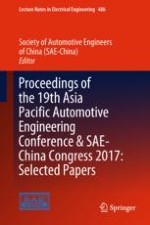2019 | OriginalPaper | Buchkapitel
Effect of Cooling Rate on Microstructure Evolution of Hot Forming High Strength Steel Based on Non-Isothermal Constitutive Model
verfasst von : Wenfeng Zhu, Guoliang Wang, Chun Xu, Xiaojuan Li
Erschienen in: Proceedings of the 19th Asia Pacific Automotive Engineering Conference & SAE-China Congress 2017: Selected Papers
Verlag: Springer Singapore
Aktivieren Sie unsere intelligente Suche, um passende Fachinhalte oder Patente zu finden.
Wählen Sie Textabschnitte aus um mit Künstlicher Intelligenz passenden Patente zu finden. powered by
Markieren Sie Textabschnitte, um KI-gestützt weitere passende Inhalte zu finden. powered by
